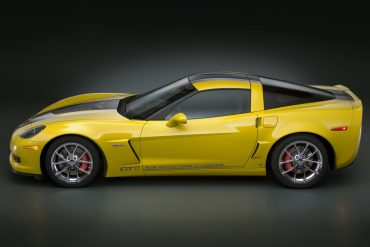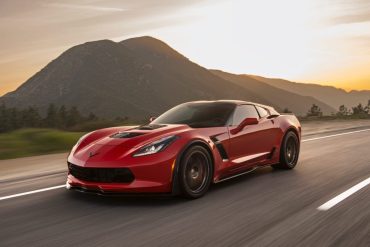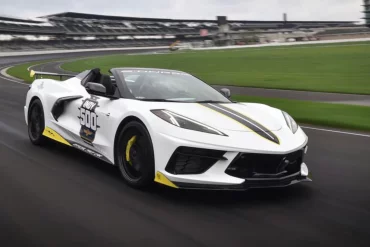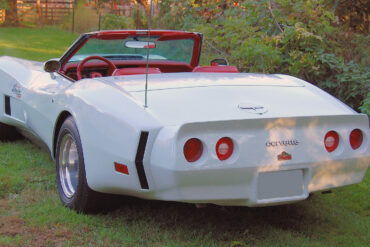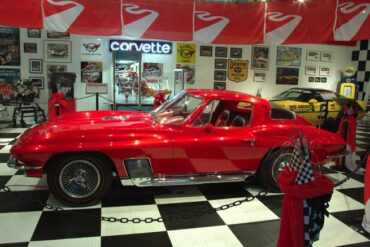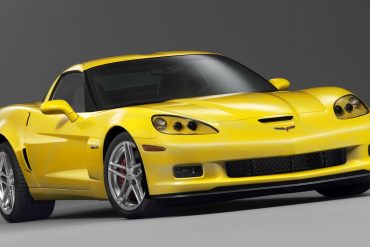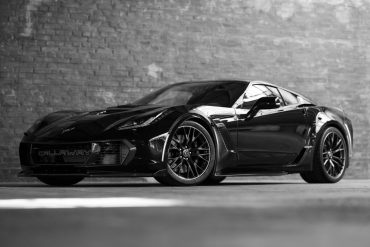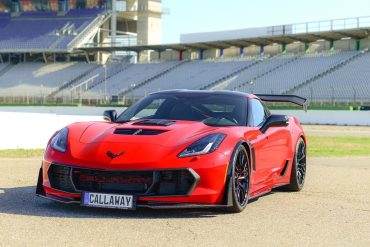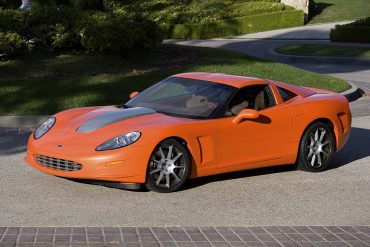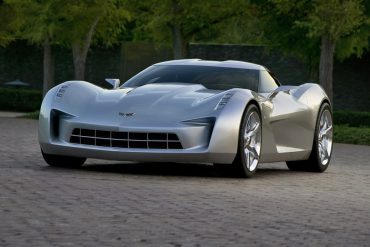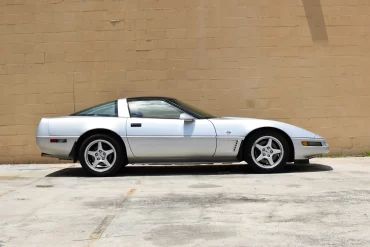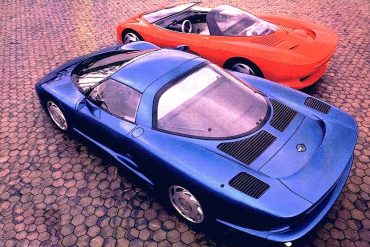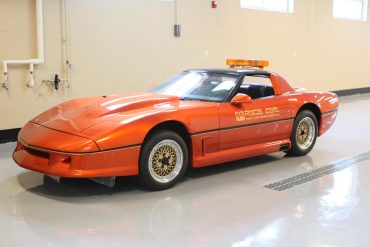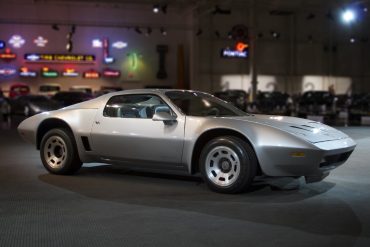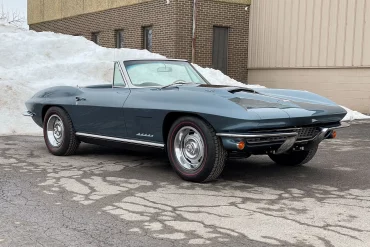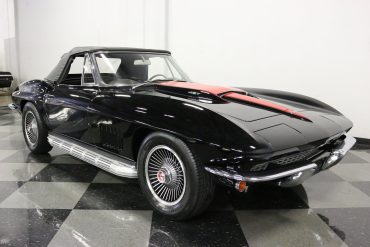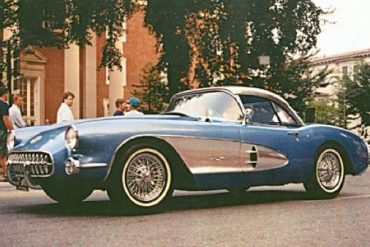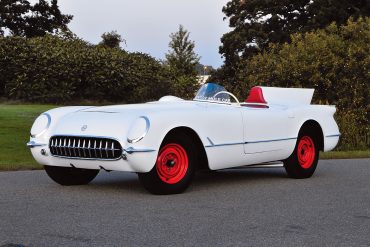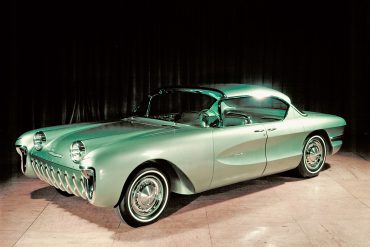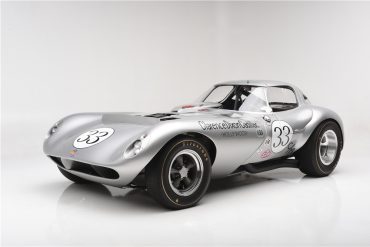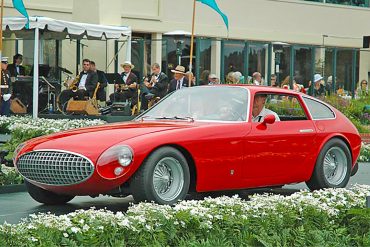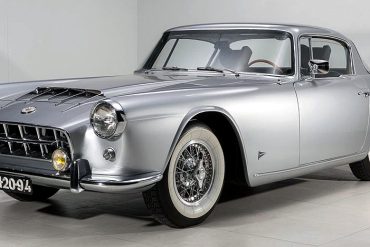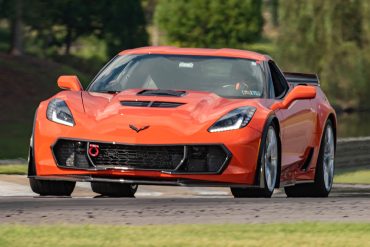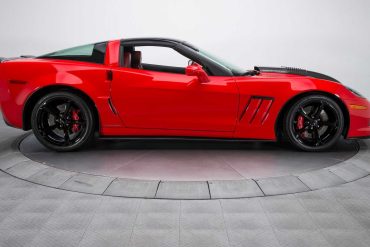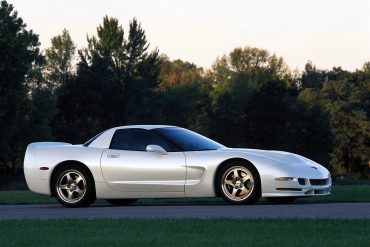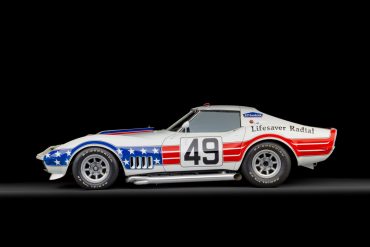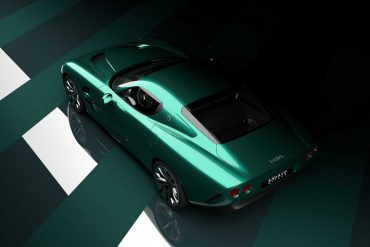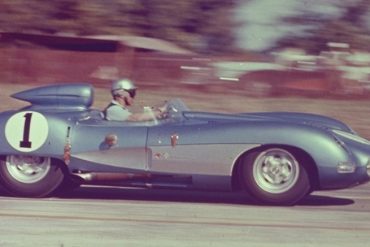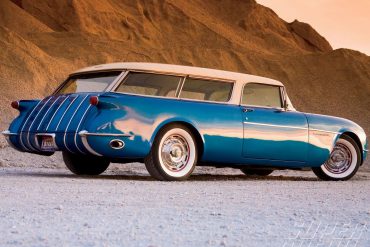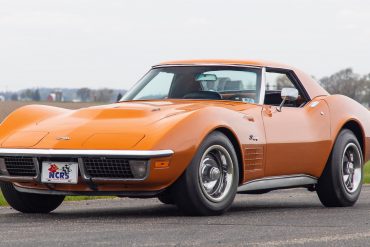Chevrolet introduced the limited production Corvette GT1 Championship Edition at Sebring International Raceway. The GT1 Championship Edition (Regular Production Option GT1) commemorates the success of Corvette Racing and the Corvette C6R:
In the tradition of coach built shooting brakes, Callaway offers the AeroWagen for any version of the C7 Corvette Coupe. Its components can be fitted to the standard production C7, the Callaway SC627 Stingray or Grand Sport, or the Callaway SC757 Z06. The AeroWagen hatch assembly is a part-for-part replacement of the original equipment Corvette rear hatch, using the original hardware and latching mechanisms. It operates in an identical fashion.
The Chevrolet Corvette has served as the official pace car of the Indy 500 18 times since 1978. That accounts for half of the 32 times that Chevrolet has been given the honor since 1948, which only highlights the sports car’s endearing legacy. Interestingly enough, this C8 Corvette convertible is the first Indy 500 pace car to have a drop-top since the 2011 Chevrolet Camaro.
The Duntov Turbo was built as a partnership between American Custom Industries (ACI), a company known for building replacement Corvette body panels, and Zora Arkus-Duntov. It was developed as a highly-stylized convertible sports car based on the production model Corvette. Each of the special Duntov Turbo's also came with a turbocharged V8.
For the 1964 New York World's Fair, Bill Mitchell and his Styling team at the Tech Center customized a production Sting Ray under Shop Order #10361 with a variety of items that transformed the already impressive Corvette into a showpiece like no other. An opening was cut into the center of the car's hood exposing a polished fuel injection manifold with the Corvette crossed flags in its very center.
The Z06 arrived for the 2006 model year as a homologation vehicle in the third quarter of 2005 and is the lightest of all Corvette models. The Z06 was equipped with the largest-displacement small-block engine ever produced, a new 7,011 cc (7.0 L; 427.8 cu in) V8 engine codenamed the LS7. The engine has a power output of 505 hp and 470 lb⋅ft.
The 25th Anniversary Edition is a hardened up version of Callaway's Corvette SC757, which in turn is based on a C7-generation Corvette Z06. It features a supercharged V8 that pumps out 757-horsepower and 777 pound-feet of torque. The supercharger is a GenThree Callaway unit with the company's TripleCooled intercooler system. A high-flow intake system feeds that beast. Callaway's Level Two HD Cooling System also helps it avoid the overheating issues that plagued C7 Z06s.
Callaway Competition has constructed some of the most successful GT3 race cars in history. Competing against the world’s premier marques, Callaway is currently recognized as the most successful race team of the ADAC GT Masters series. To celebrate Callaway Competition’s 25th anniversary, we’re building 25 unique, specially-equipped “Callaway Champion” road cars. The Z06-based Champions are built by our expert craftsmen.
The Callaway C16 was Callaway’s 16th major automotive project. It was a limited production, bespoke automobile, built to order, by what the Press called “the best specialist engineers in the business”. These cars are seriously fast, beautiful, and exclusive. The C16 was a direct competitor for the Porsche GT3, the Lamborghini Murcielago, the Ferrari 599 GTB. It was both faster and more capable than its competitors, at less cost.
SIDESWIPE takes the form of a sleek, vision concept dreamed up by the Corvette designers at GM. The design is influenced by the original Stingray race car, introduced in 1959, but also draws on Corvette heritage cues from other generations. It brings them together in a futuristic shape that seems to be equal parts racecar and space ship.
Chevrolet knows their clientele, and with the 1996 Corvette Collector's Edition LT4, the automaker put together a special package that would entice hard-core 'Vette fans with a unique tribute to the outgoing C4 model. The $1250 option brought unique Sebring Silver Metallic paint, 5-spoke wheels, and, of course, special badges and embroidery. It also received the upgraded LT4 powerplant available in the Grand Sport, and with 330 horsepower on tap.
While it was understood that the Corvette Indy Concept would never be fully realized as a production vehicle, it paved the way for the creation of the twin-turbo CERV III. The CERV III (Chevrolet Engineering Research Vehicle No. 3) was introduced in January, 1990 at the International Auto Show in Detroit, Michigan. Like the latter iteration of the Corvette Indy Concept car, the CERV III was fitted with a 5.7 Liter, 32-valve, dual-overhead cam LT5 engine that featured twin turbochargers. It had 650 hp and 655 lb/ft of torque and top speed of 225 mph.
The 1984 PPG Indy Pace Car Corvette was special from the very beginning- in several ways. Initially, it was created as a one-off concept car that would be designated as one of the official Pace Cars for the PPG Indy Car World Series of races. It was custom-built by PPG in cooperation with the Chevrolet Division of General Motors. The 205 HP 350 was replaced by a 450hp, 401 cubic-inch V-8.
The XP-895 was one in a series of experimental Corvettes built to explore alternative engine placements and chassis layouts. This vehicle features an 400 cid small block V8 mounted transversely in a mid-engine position. It utilizes a Turbo Hydramatic transmission via a bevel gear box. The body panels are all aluminum.
These Big Block cars would be the high-water mark of Corvette performance and refinement for the C2 series of cars. The 427/400hp L68 came standard from the factory with the Holley triple two-barrel carburetor arrangement called Tri-Power. Only 2101 Corvettes in 1967 received this rare engine option which was a $305.50 cost.
The L71 was Chevrolet’s most powerful engine in 1967 which replaced the big-block L71 from the previous year. Using it’s famous ‘Tri Power’ intake manifold was rated by the factory at 435 bhp. Costing $437.10, 3,754 Corvettes were made with the L71 options and they could not come with automatic transmissions nor air conditioning.
If you were a senior GM employee, one of the perks was being able to have your own custom built for you. Bill Mitchell was known for it, but this SR-2 Lookalike was built for GM president Harlow Curtis, who was president of GM during the period that the SR-2 were developed. The lookalike was built by GM’s styling staff and presented to him.
Built for outright top speed, this prototype Corvette was built by Zora Duntov. He successfully piloted the car to a two-way average speed of 150 mph in January of 1956 at Daytona. Later two more similar cars were built for the 1956 Daytona Speed Weeks in February. After initial resistance from Engineering, Duntov’s cam was delivered to the Proving Ground.
GM’s 1950s Motorama-mobiles were mostly pretty out-there, with flamboyant fins, rocket-inspired skegs and cockpits, and other flights of wild imagination. Frankly, many of them were a bit absurd and even childish. But there were a few that were somewhat down to earth, even rather brilliant, like this 1955 Chevrolet Biscayne.
Bill Thomas had one goal in mind when he designed and produced the Cheetah: beat the Ford Cobra. 25 examples were produced until sadly, the factory burnt down. After the blaze, chevrolet pulled out of the project. The power to weight ratio was phenomenal (it was almost 500lbs lighter than the cobra!). The V8 was pushed back as far as possible leaving the engine almost in the center of the car. Some examples were tuned as high as 520HP.
This one-off 1961 Vignale Corvette was built for the 1961 Salon de l'Automobile in Paris, France. It was based on a 1960 Corvette chassis and built by Italian coachmaker Carrozzeria Vignale. The body was designed by Gordon Kelly.
Chevrolet Corvette Coupé, 1957, by Ghia Aigle. Designed by Giovanni Michellotti a one-off built on a ‘54 Corvette chassis by Carozzeria Ghia in Switzerland. The Ghia Corvette was powered by a Blue Flame 6 in-line engine with a 4-speed manual gearbox
For the 2014 model year, the Chevrolet team sculpted the seventh-generation Corvette into the most sophisticated, most feature-packed Corvette produced to date. Facing a daunting challenge, new technology enabled Callaway engineers to produce breathtaking power with seamless transition into and out of positive manifold pressure. Entirely new, Callaway’s patented GenThree supercharger design improved airflow quality and increased charge air cooling capacity.
The 2005-2013 Callaway Corvette was a specialist version of the C6 Corvette, built by Callaway Cars expert craftsmen and sold through selected Callaway/Chevrolet dealers. The 17th “C-Project” undertaken by Callaway first produced naturally-aspirated SuperNatural™ 450, 461, 490 (6.0L) and 550 (6.8L & 7.0L) horsepower Callaway Corvettes. In February 2006, Callaway returned to its positive manifold pressure roots, introducing Callaway “SuperCharged” Corvettes.
"Hot" is an apt description of this special coupe's drivetrain. Its 6.6-liter engine produces 512 horsepower and 523 lbs.-ft. of torque. Mated to a four-speed automatic transmission and featuring a 3:41 geared limited slip differential and four-wheel independent suspension, this "Vette takes a backseat to no other vehicle. The White Shark Corvette also features power rack-and-pinion steering to precisely pilot this vehicle and four-wheel disc brakes with ABS.
When one of his cars was severely damaged in 1972, John Greenwood converted his 1969 L88 Convertible into a formidable race car. Included as the formidable ZL1 engine with 750 bhp on tap. Other modifications included a rear spoiler, quick replacement radiator and camber adjusters. At Le Mans, this car set the GT-class record for top speed down the Le Mans straight with 215 mph.
The Zagato company took a C7 Corvette Z06 and transformed it into the IsoRivolta GTZ, a "spiritual descendant" of the Iso Grifo A3/C (Corsa). The original A3/C race car was developed by Giotto Bizzarrini not long after he left Ferrari, where he had served as cheif engineer behind the 250 GTO, which is revered as the world's most expensive car. Bizzarrini purportedly fancied the A3/C as his "own personal evolution of (and improvement upon) the GTO design."
The Corvette SS began life as an experimental race car, and was unveiled to the public at the 12 Hours of Sebring endurance race on March 23, 1957. The SS was in training for Chevrolet's debut at LeMans that year. The Sebring race was, in many ways, Chevrolet's inauguration into modern racing. But the SS never finished the race, much to the dismay of the racing community.
Carl Renner was responsible for the Nomad which was essentially a Corvette built with an extended station wagon roof. This meant the Corvette shared its lightweight fiberglass body, ‘Blue Flame’ inline-6 engine and curvaceous styling with the Nomad.
Finally in 1971, both the ZR1 and ZR2 packages were offered side by side as initially intended. The solid lifter, 350 cubic-inch LT-1 found under the hood of the ZR1 featured a ‘178’ high-performance camshaft and a 780 CFM Holley four-barrel carburetor, which resided atop a specialized aluminum intake. The LT-1 featured a reduced compression ratio of 9.0:1 for the 1971 production year, relative to 11.0:1 specified the year prior.


